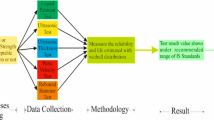Abstract
Loads at vital steel structures occur during their production and assembly (residual stresses), during the execution of functional tasks in exploitation (stationary and dynamic loads) and during the disturbed process of exploitation (non-stationary dynamic loads). Considering the fact that stress concentrators, corrosion and unpredictable effects that occur during exploitation must be taken into account as well, it is clear that loading of vital structures during the design phase can not be represented with a model in which the parameters change uniformly. Therefore only experimental non-destructive tests performed at large steel structures during exploitation enable the assessment of their current condition, need for particular repairs and assessment of integrity. In that way the data necessary for determination of causes of degradation of material and welded joints at structures, for the evaluation of mutual influence of equipment parts, as well as for determination of functionality and reliability of operation of drive systems. This primarily refers to vital steel structures of bucket-wheel excavators, dredgers and cranes, as well as to vital steel structures at hydroelectric equipment, thermal power plant equipment, bridges etc. This paper presents the analysis of causes for the occurrence of damages at the support structure of the boom of the bucket-wheel excavator, which is operating at the open pit coal mine near Kostolac (Serbia), that was executed on the basis of non-destructive tests. The paper also contains the procedure for the repair of damaged structure through the application of adequate welding, performed at existing and newly produced components, and the assessment of structural integrity after the repair based on non-compliances detected during the design process, as well as during the making of the support structure of the bucket-wheel excavator boom due to inadequate radiuses defined during the processes of design and production and due to the existence of flaws on the surface and within welded joints.


















Similar content being viewed by others
REFERENCES
Arsić, M., Bošnjak, S., Zrnić, N., Sedmak, A., and Gnjatović, N., Bucket wheel failure caused by residual stresses in welded joints, Eng. Fail. Anal., 2011, vol. 18, no. 2, pp. 700–712.
Bošnjak, S., Arsić, M., Savićević, S., Milojević, G., and Arsić, D., Fracture analysis of the pulley of a bucket wheel boom hoist system, Eksploatacja i Niezawodnosc – Maintenance and Reliability, 2016 vol. 18, no. 2, pp. 155–163.https://doi.org/10.17531/ein.2016.2.1
Bošnjak, S., Arsić, M., Gnjatović, N., Milenović, I., and Arsić, D., Failure of the bucket wheel excavator buckets, Eng. Fail. Anal., 2018, vol. 84, pp. 247–261.
Arsić, D., Nikolić, R., Lazić, V., Arsić, A., Savić, Z., Djačić, S., and Hadzima, B., Analysis of the cause of the girth gear tooth fracture occurrence at the bucket wheel excavator, Transp. Res. Procedia, 2019, vol. 40, pp. 413–418.
Gašić, V., Arsić, A., and Flajs, Ž., Experimental study on the stresses at the I-beam end-plate moment connection, Struct. Integr. Life, 2019, vol. 19, no. 1, pp. 53–57.
Amir Hossein Keshvari Fard, Ghasemi, R., and Mohammadi, B., Study of EMI-based damage type identification in a cracked metallic specimen repaired by a composite patch, Russ. J. Nondestruct. Test., 2020, vol. 56, pp. 540–548. https://doi.org/10.1134/S1061830920060054
Moczko, P., Pietrusiak, D., and Wieckowski Jedrzej, Investigation of the failure of the bucket wheel excavator bridge conveyor, Eng. Fail. Anal., 2019, vol. 106, p. 104180. https://doi.org/10.1016/j.engfailanal.2019.104180
Yin, Y., Grondin, G.Y., Obaia, K.H., and Elwi, A.E., Fatigue life prediction of heavy mining equipment. Part 1: Fatigue load assessment and crack growth rate tests, J. Construct. Steel. Res., 2007, vol. 63, pp. 1494–1505.
Yin, Y., Grondin, G.Y., Obaia, K.H., and Elwi, A.E., Fatigue life prediction of heavy mining equipment. Part 2: Behaviour of corner crack in steel welded box section and remaining fatigue life determination, J. Construct. Steel. Res., 2008, vol. 64, pp. 62–71.
Risteiu, M., Ileana, I., and Duma, S., New approaches in heavy duties industrial processes monitoring by using smart sensors, Acta Univ. Apulensis, 2006, vol. 12, pp. 80–92.
Arsić, D., Gnjatović, N., Sedmak, S., Arsić, A., and Uhričik, M., Integrity assessment and determination of residual fatigue life of vital parts of bucket-wheel excavator operating under dynamic loads, Eng. Fail. Anal., 2019, vol. 105, pp. 182–195.
Bartelmus, W. and Zimroz, R., A new feature for monitoring the condition of gearboxes in non-stationary operating conditions, Mech. Syst. Signal Process., 2009, vol. 23, no. 15, pp. 28–34.
EN 10025-2. Hot rolled products of structural steels—Part 2: Technical delivery conditions for non-alloy structural steels, 2011.
EN 13018. Non-destructive testing—Visual testing—General principles, 2001.
EN ISO 3452-1. Non-destructive testing—Penetrant testing—Part 1: General principles, 2013.
EN 499, E 42 2 Mo B 42. Welding consumables. Covered electrodes for manual metal arc welding of non alloy and fine grain steels, Classification, 1995.
EN ISO 17640. Non-destructive testing of welds. Ultrasonic testing. Techniques, testing levels, and assessment, 2018.
Sedmak, A., Hemer, A., Sedmak, S.A., Milović, L., Grbović, A., Čabrilo, A., and Kljajin, M., Welded joint geometry effect on fatigue crack growth resistance in different metallic materials, International Journal of Fatigue, 2021, vol. 150, p. 106298.https://doi.org/10.1016/j.ijfatigue.2021.106298
Hertzberg, R., Deformation and Fracture Mechanics of Engineering Materials, New York: Wiley, 1995.
Arsić, M., Savić, Z., Sedmak, A., Bosnjak, S., and Sedmak, A., Experimental examination of fatigue life of welded joint with stress concentration, Fratt. Integr. Strutt., 2016, vol. 10, no. 36, pp. 27–35.
Mijatović, T., Manjgo, M., Burzić, M., Čolić, K., Burzić, Z., and T. Vuherer, Structural integrity assessment from the aspect of fracture mechanics, Structural Integrity and Life, 2019, vol. 19, no. 2, pp. 121–124.
Author information
Authors and Affiliations
Corresponding author
Rights and permissions
About this article
Cite this article
Arsić, M., Arsić, D., Flajs, Ž. et al. Application of Non-Destructive Testing for Condition Analysis, Repair of Damages and Integrity Assessment of Vital Steel Structures. Russ J Nondestruct Test 57, 918–931 (2021). https://doi.org/10.1134/S1061830921100053
Received:
Revised:
Accepted:
Published:
Issue Date:
DOI: https://doi.org/10.1134/S1061830921100053




